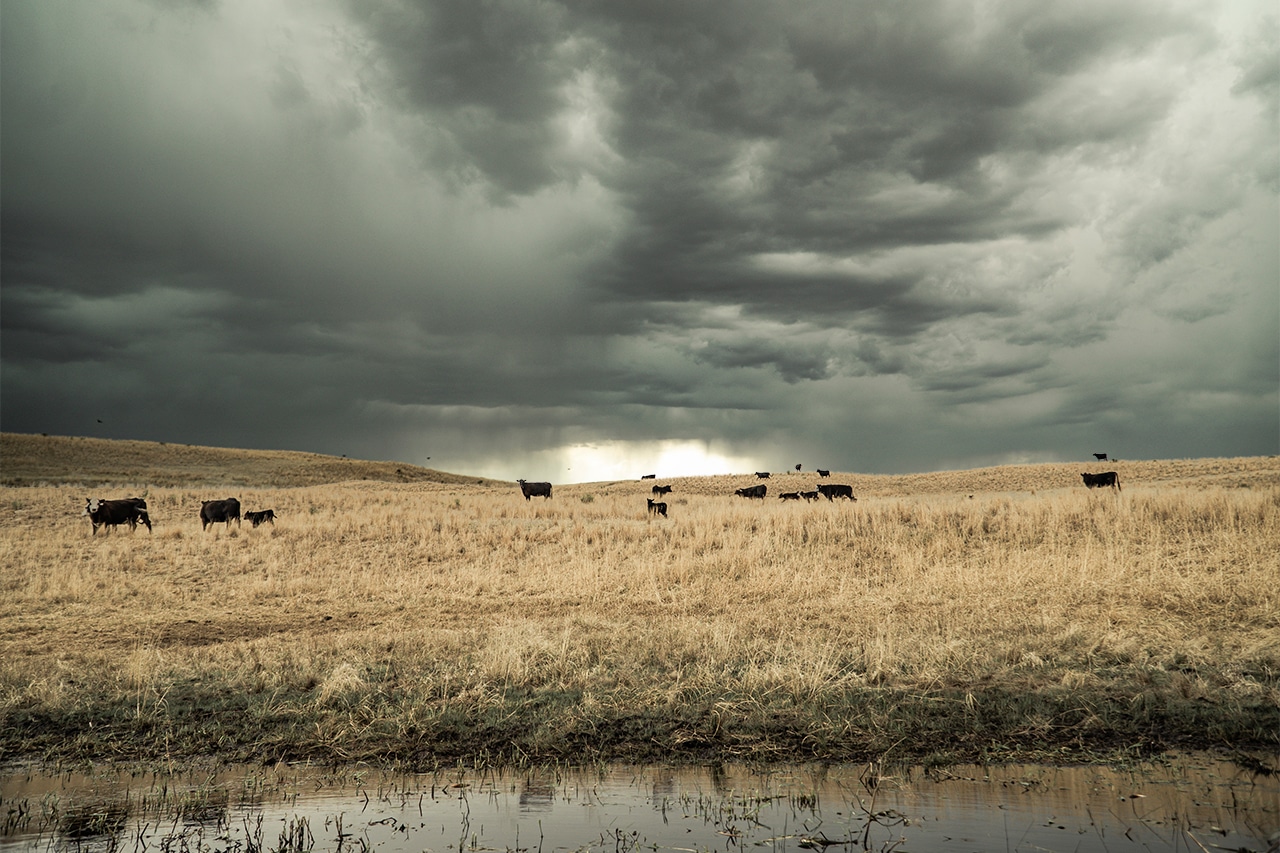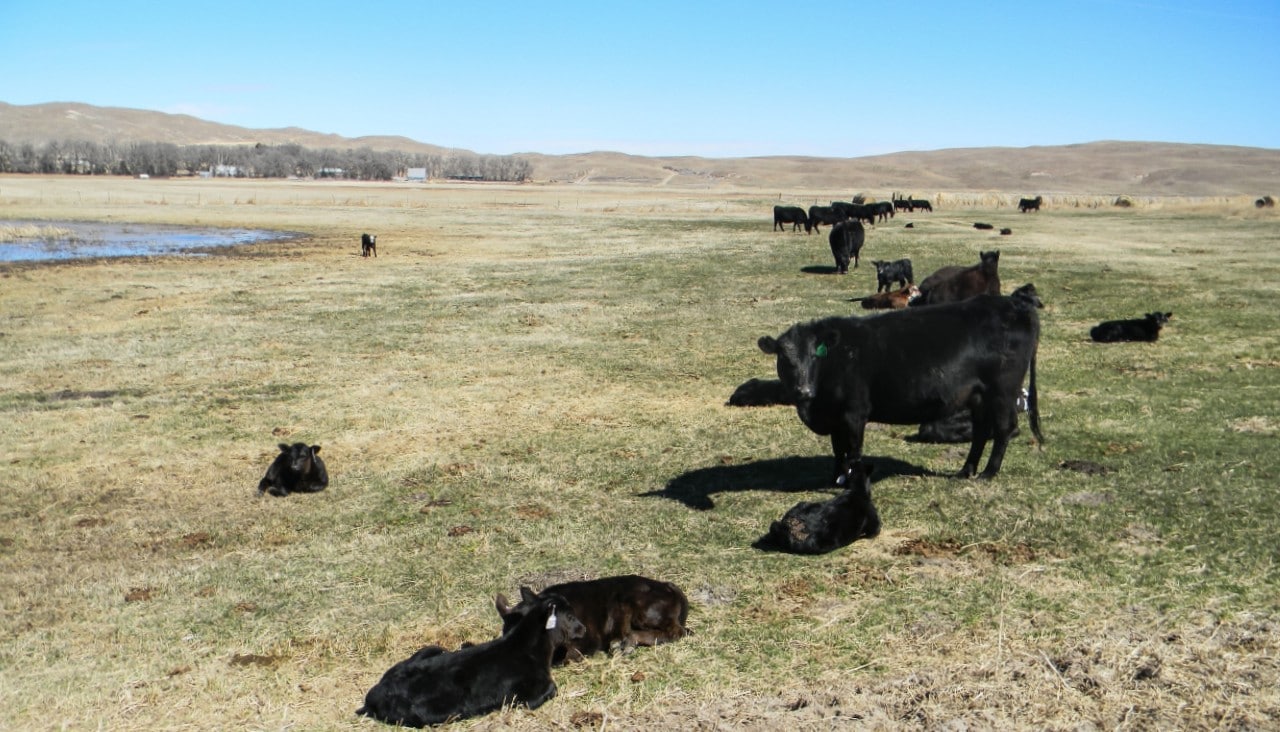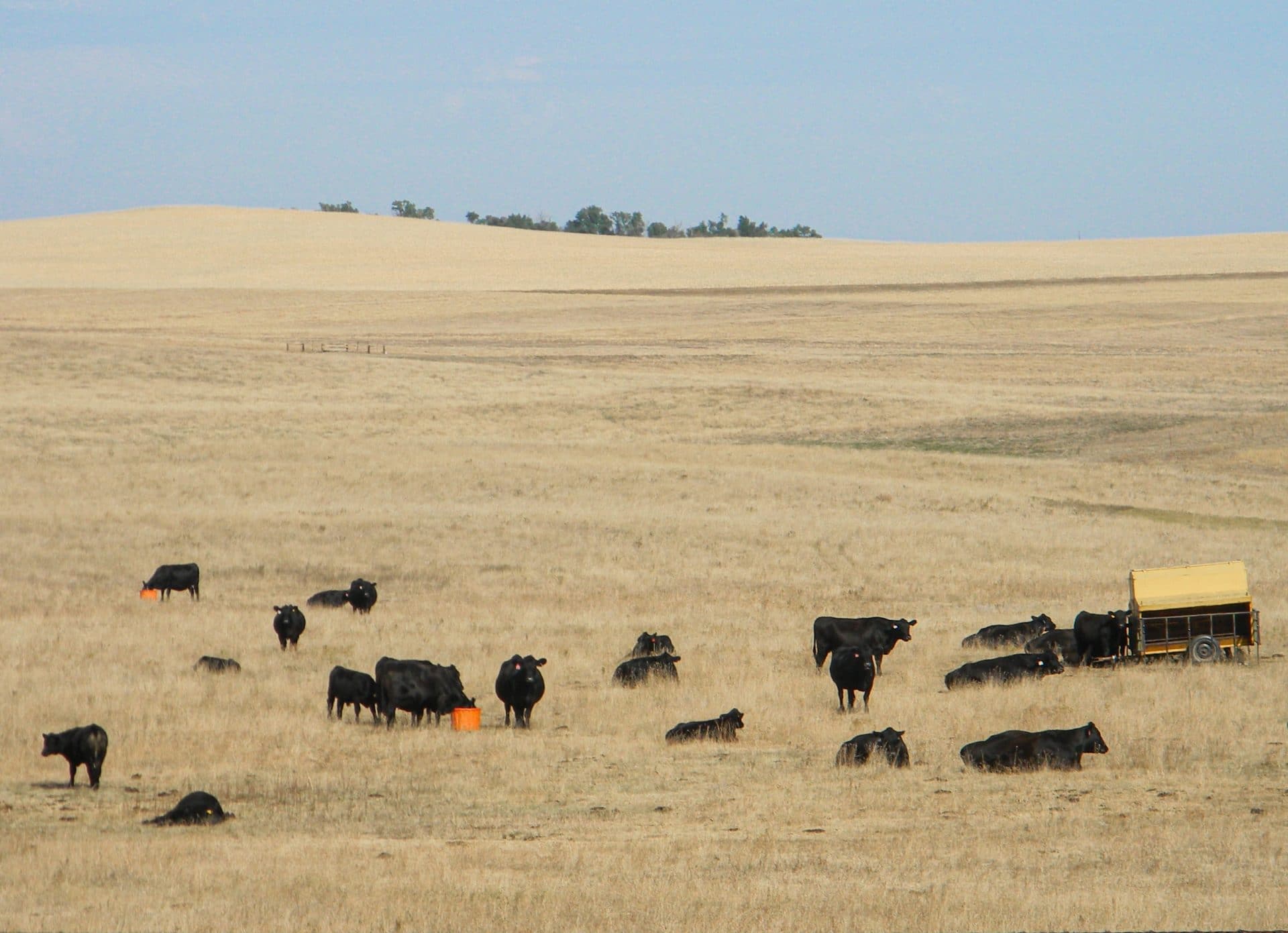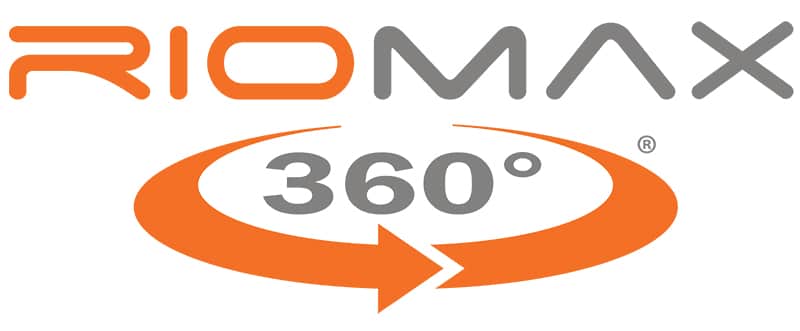Last updated on October 2nd, 2023 at 02:24 pm
Uncertainty.
That’s been the fundamental emotion behind the dark clouds shading the beef business the past several years. And just when it seemed the silver lining was peeking out as the cattle cycle began curving in favor of cow-calf producers, more uncertainty. Oil prices climbing. Feed and fertilizer prices hitching a rocket ride. Ongoing drought.
Indeed, it seems as if cow-calf producers are always climbing the next hill. That means the ongoing quest for more efficiency in your cows and your operation will…well, continue to be an ongoing quest.

While that’s not a new idea, perhaps there’s a new way to look at it, according to James Henderson with the Bradley 3 Ranch, headquartered in Memphis, Texas.
Tracking Data To Improve Herd Efficiency
“I think the most ignored number in our business is calves weaned to cows exposed,” said the Angus and Charolais seedstock producer, who manages the ranch along with his wife, Mary Lou Bradley-Henderson. “And the reason nobody really looks at that number is because you’ve got to have a 15- to 18-month calendar. And most people don’t keep those kind of records.”
However, SPA (Standardized Performance Analysis) data show that number has hovered around 78% for the past 40 years, he said. Twenty years ago, that’s where they were as well.
“We’ve really attacked that number here at the ranch.” This year, that number should be nearly 90%, he said. “For us, that’s 57 calves with no more overhead. That’s a big deal. So concentrating on calves weaned to cows exposed can add a lot of income.”
To increase weaning percentage, Henderson says be ruthless on culling open cows whenever you find they’re open. “Whether it’s when you preg check or when you get through calving, whatever it is, get those cows gone that don’t bring you a calf.”
A Closer Look at Your Calving Window
Then, according to Kim Siebert, an Angus and Red Angus seedstock producer near Henderson, Neb., increasing the number of cows that calve in the first 30 days will help your cows make you more money.
Siebert chooses 30 days rather than the 21 days of a cow’s cycle because cows don’t use calendars. But the concept is the same—calves born early weigh more at weaning than calves born late. “At 3 pounds a day, if they’re 20 days older, that’s 60 pounds. And we still sell cattle by the pound and let’s please never forget that.”
Henderson is a popular speaker at cattlemen’s meetings and the first question he asks is, “How many of you own a scale? Because in a business where the revenue is by the pound, anybody who doesn’t own a scale is just like a retail store not having a cash register.”
That’s important for a number of reasons. He said beef producers, to really know where they are in operational health and efficiency, should look at weaning weight per acre, not weaning weight per cow.

That Leads to Cow Size & Nutrition.
“I think we’ve gotten cows too big to be cost effective and that’s another component of what you’ve got to look at on a ranch.”
When weaning weights are collected on the Bradley 3 Ranch, they also weigh the cow. “We’ve gotten cows to where they wean 61.4% of their body weight,” he said. “You’re not going to find very many of those big cows that can wean even 50% of their body weight, let alone 60%. And you can wean a lot more pounds per acre with 1,200-pound cows than you can with 1,600-pound cows.”
According to Siebert, there are several more reasons why chasing growth needs to be kept in moderation. “There are two things that are being lost in our pursuit of EPD packages and that’s structural soundness and female fertility,” he said.
Fertility, while lowly heritable, is still a matter of genetics and management. But carcass size? Yep.
Siebert has been ultrasounding his bulls and heifers for many years. Early on, he began looking at ribeye size per 100 pounds of body weight. What he learned is fascinating.
“This is not exact science yet,” he said. “It’s just Kim’s analysis at this point. But when I get over 1.25 to 1.3 square inches of ribeye per 100 pounds of body weight, the fertility of my females goes out the window.”
Cow & Calf Nutrition
To Henderson’s way of thinking, another important aspect in helping your cows make more money is paying attention during calving season, making sure the calf is up and alive and going. “It’s proper vaccination programs, both on the cow and calf to get them to weaning. It’s everywhere where you can lose a calf from the time you turn the bulls out until you get to weaning.”
While that involves a number of things, nutrition is perhaps the most important. On Siebert’s operation that centers on his mineral program.
While he and his son Kendall have been in the seedstock business for many years, they still run their cows like a commercial herd. In the fall and winter, corn or milo stalks are the ration, along with salt, water and Riomax®. In the spring and summer, they supplement Riomax® as their 140 cows graze 700 acres of low-quality river bottom forage in a state-owned area designed for waterfowl.
“So I have large volumes of poor quality forage year ‘round. And I’m creating a cow herd that can survive and succeed in that environment.”
To Siebert’s thinking, that’s where the mineral and vitamin supplement shows its importance. First, the minerals have to be in a form that is absorbable by the animal. That’s an organic or chelated formulation.

It's Not Just What, It's When.
Then the cows have to be on it long enough to not only prime their calf, both as a fetus and as a newborn, with sufficient mineral concentrations to hit the ground running, but still have enough in the tank to rebreed.
Once he learned how much mineral a cow will put into a baby calf to prep it for the first three months of life, he knew that if the cow can’t give that to the calf, you’re set up for disaster. “And if she barely had enough (for herself), you understand why she didn’t rebreed.”
He attributes the Riomax® mineral formulation to increasing fertility and other maternal qualities. “Now that we’ve been on the product, a lot of those little problems I had on the female side are starting to disappear. And the first-time service on our virgin heifers keeps getting better every year.”
Beyond that, calf health is better. Fewer calves get sick, “and we treat them and they just seem to rebound better,” he said. “If you’re treating fewer sick calves and you have more calves in the first 30 days, you’re doing everything you can herd health-wise to make this thing work.”


